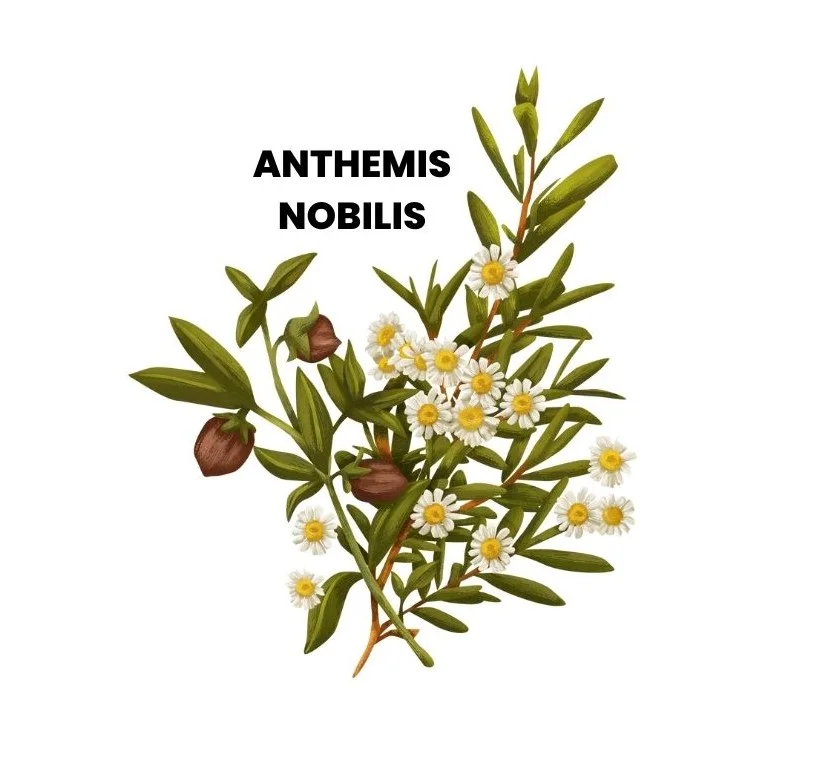Anthemis nobilis a homeopathic remedy like ordinary Chamomile, is derived from the plant Chamomilla recutita, commonly known as German or Roman chamomile.
The medicinal properties are harnessed from the flowering heads of this plant through a potentization process.

SOURCE INFORMATION
Chamomilla recutita (formerly known as Matricaria chamomilla or German Chamomile).
- Kingdom: Plantae
- Clade: Angiosperms
- Clade: Eudicots
- Clade: Asterids
- Order: Asterales
- Family: Asteraceae
- Genus: Matricaria
- Species: Matricaria chamomilla
Chamomilla recutita, commonly known as German Chamomile, is a delicate annual plant belonging to the Asteraceae family.
This plant is native to Europe and Western Asia but has become naturalized in various parts of the world.
It is widely recognized for its feathery leaves and daisy-like flowers.
DRUG PHARMACOLOGY
- Chamomilla exhibits its therapeutic effects through its influence on the nervous system, addressing heightened sensitivity to cold.
- It acts on the respiratory system, gastrointestinal tract, urinary system, and skin.
- The remedy’s impact is notable in alleviating symptoms such as coryza, abdominal discomfort, urinary distress, and unique skin sensations.
- Administered in the third potency, it engages the body’s vital force to restore balance and promote healing.
CHIEF GUIDING SYMPTOMS
Respiratory Symptoms
- Coryza marked by excessive lachrymation, sneezing, and the discharge of clear water from the nose.
- Symptoms intensify indoors and worsen in a warm room.
- Constriction and rawness of the throat, accompanied by a cough with tickling sensations.
Abdominal Disturbances
- Aching in the region of the liver, coupled with griping and chilliness inside the abdomen, extending into the legs.
- Itching of the anus, often associated with white, putty-like stools.
Urinary Issues
- Distended feeling in the bladder.
- Pain along the spermatic cord, which feels full, as if varicosed.
- Frequent urination.
Skin Sensations
- Itching of the soles, mimicking the sensation from chilblains.
- Goose-flesh-like skin sensations.
DOSAGE
- Administer Chamomilla in the third potency for optimal therapeutic effects.
FAQs (Frequently Asked Questions)
How does Chamomilla manifest its sensitivity to cold?
- Chamomilla is distinctive for its heightened sensitivity to cold air and cold substances.
What respiratory symptoms does Chamomilla address?
- It is effective for coryza with excessive lachrymation, sneezing, and a discharge of clear water from the nose.
- Symptoms worsen indoors and in warm rooms.
Are there specific abdominal symptoms associated with Chamomilla?
- Yes, including aching in the liver region, griping, chilliness within the abdomen extending into the legs, itching of the anus, and unique stool characteristics.
How does Chamomilla impact the urinary system?
- Chamomilla is indicated for a distended bladder feeling, pain along the spermatic cord with a feeling of fullness, as if varicosed, and frequent urination.
